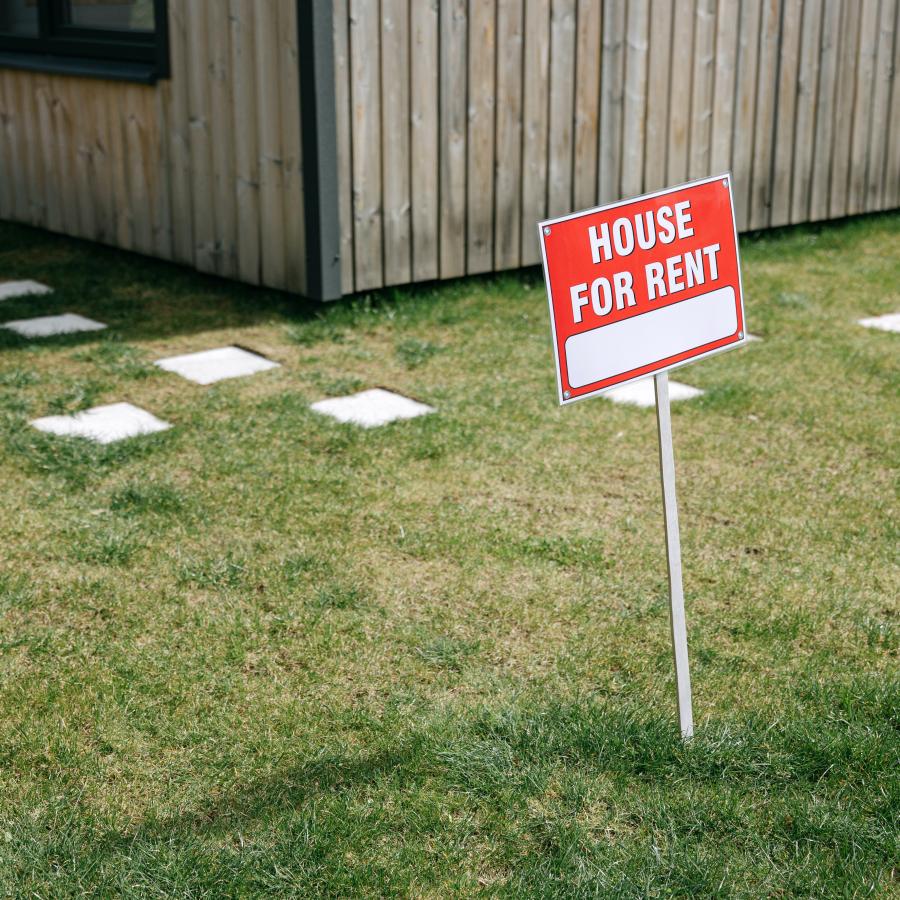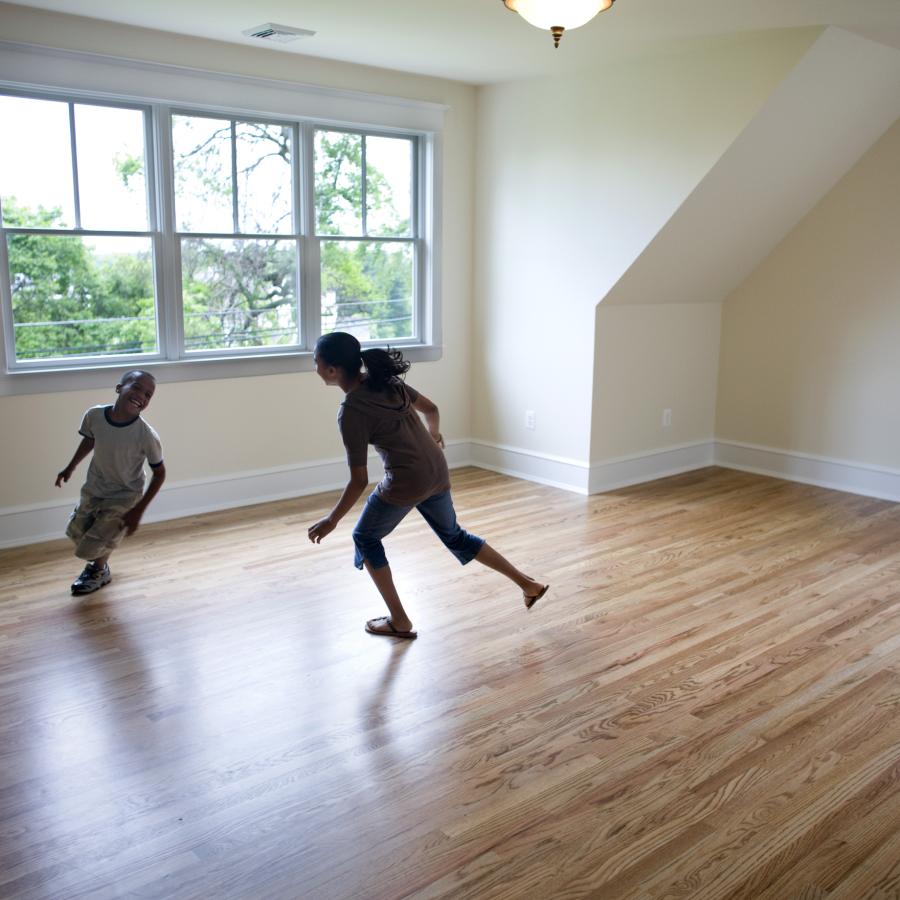DESCRIPTION
gradientRent Stabilization

Our country’s history of housing discrimination created the current conditions in which low-income communities and communities of color disproportionately rent their homes, placing them at the whim of a largely unregulated market with few tenant protections. Prior to the COVID-19 pandemic, nearly 10 million renter households in the U.S. were severely cost-burdened (paying more than 50 percent of their income on rent). In 2023, the minimum wage needed to afford a modest one-bedroom home at a fair market rate in the United States is $23.67 per hour. As rents have continued to skyrocket with inflation and other factors, the need for protections for tenants in privately owned residential properties has increased.
Rent stabilization, sometimes referred to as rent control, is an effective yet underutilized tool to increase housing stability and affordability for current tenants. It works by protecting tenants from excessive rent hikes, usually by creating a predictable schedule for the maximum rent increase allowable each year while ensuring a fair return for landlords. It is a smart, proven policy that can immediately stabilize prices, halt rent gouging, and reduce the risk of displacement and homelessness while increasing housing security and affordability over the long term. By decreasing renter housing cost burden over time, rent stabilization leaves tenants with more money to spend on essential needs and in the local economy. The increased stability and affordability created by rent control also have positive consequences on mental and physical health, children’s educational outcomes, and community stability.
Rent controls were first implemented in the United States during World War I and World War II era in response to housing shortages and rent gouging, and then were implemented again in many cities in the 1960s and 1970s in response to a growing tenant movement concerned about civil rights and inflation.
The growth of rent stabilization in major cities created a backlash from the real estate industry, which worked diligently to fight its spread by initiating and supporting preemption policies across the country, in addition to undermining efforts through legislation like the Costa-Hawkins Rental Housing Act. More recently, there has been renewed interest in rent stabilization from cities and states. Both California and Oregon passed statewide rent stabilization in 2019, New York strengthened its laws in 2020, and Saint Paul became the first city in the Midwest to enact rent stabilization in 2021.
What are we calling it?
Multiple terms are often used interchangeably to describe rent stabilization policies, including:
- Rent regulations: a general term for policies that aim to make private rental housing more affordable to tenants, whether by limiting rent increases, setting maximum rents, establishing rules for determining fair rents, and/or subsidizing lower rents or smaller rent increases
- Rent control: sometimes referred to as “first-generation rent regulations”, these are policies that strictly regulate rent increases through price ceilings
- Rent stabilization: sometimes referred to as “second-generation rent regulations” or “modern rent control”, these are policies that restrict how much landlords are allowed to increase rent annually
- Rent cap: the rate that landlords are allowed to increase annually, most often in the form of a percentage that can be paired with inflation
- Rent freeze: policies that prohibit rent increases and/or strictly set maximum rents, usually for a short period of time such as during a public health emergency
See Local Progress, USC Dornsife Program for Environmental and Regional Equity, the Center for Urban and Regional Affairs at the University of Minnesota, and the Right to the City Alliance for more resources on rent stabilization ordinances.
- Elected and appointed state and city officials can champion and pass rent stabilization ordinances and create funding and administrative mechanisms for enforcement.
- State legislators can champion and pass enabling legislation to protect the right of local officials to pass their own rent stabilization ordinances (i.e., prevent preemption laws); in states where cities are preempted from passing rent regulations, state legislators can pass statewide rent stabilization laws (see: Oregon and California) or create loopholes that generate opportunities for local campaigns to pass legislation (see: Minnesota).
- Tenant associations, community-based organizations, and other advocates can build grassroots campaigns to build public will and advocate for rent stabilization as a tool for the preservation of affordable housing; if state and city charters allow, advocates can place rent. stabilization ordinances on the ballot and pass them via popular vote.
- Business leaders can lend support to grassroots campaigns by highlighting the importance of housing stability for employees and the workforce.
- Rent boards are sometimes created to oversee policy implementation, with roles ranging from adjudicating appeals to mediating conflicts between landlords and tenants.
- The federal government can enact rent stabilization by requiring landlords who receive federal financing to implement various tenant protections, including rent regulation. In July 2023, PolicyLink joined thousands of tenants, grassroots organizers, and policy advocates in encouraging the Federal Housing Finance Agency to implement rent regulations in all federally-backed homes.
Rent stabilization ordinances are often established by city councils or through a ballot initiative process; in some instances, states have also established rent stabilization policies. The key steps to successfully creating and passing robust legislation include: mobilizing a strong case and broad base of support, drafting a strong law that can withstand legal challenges, ensuring maximum coverage of rental homes to protect the most tenants, maximizing long-term affordability, centering tenant voices in program design and implementation, pairing rent stabilization with other tenant protections, and ensuring adequate enforcement and community education. Jurisdictions seeking to implement rent stabilization must consider a range of related legal and logistical questions.
- Fair return. Because the U.S. Supreme Court and California courts have consistently ruled that owners of rent-regulated properties have a constitutional right to a fair return on investment, nearly all rent regulations include a provision that entitles a landlord to a fair return on their investment. When a landlord is able to prove they meet the criteria for not receiving a fair return, they can be granted rent increases above the allowable yearly increase.
- Policy design. No two rent stabilization policies look the same. Each jurisdiction must craft a policy that fits their local housing and political context. When designing a rent stabilization ordinance, consider the following elements:
- Setting limits on rent increases - Maximum annual rent increases can be set as an absolute percentage, linked to changes in the cost of living (often measured by the consumer price index), or structured as a combination of both.
- Vacancy control or decontrol - Vacancy decontrol allows a landlord to raise rent without restriction when a unit becomes vacant, and creates an incentive for eviction and/or tenant turnover. Vacancy control ensures that the maximum allowable rent increase is in place even if tenancy changes. Partial decontrol is a middle ground in which landlords can increase rent between tenancies with some limitations. The strongest rent control ordinances have little to no decontrol.
- Exemptions - The most common exemption in rent stabilization ordinances is for new construction and this can be rolling or fixed (e.g. the first 20 years of the life of a building are exempt or any building built after a certain date is exempt). Exemptions can also include certain sizes or types of buildings. Cities should pay attention to who is more likely to rent certain units when selecting exemptions to avoid undermining housing stability for renter populations who need it most.
- Pass-throughs - Some cities allow landlords to recover a portion of their expenses related to maintenance and capital improvements by passing it on to the tenant. Cities should be careful in specifying what costs are eligible in pass-throughs as to prevent unnecessary rent increases for trivial maintenance and renovations.
- Banking - In some cities with rent stabilization, when a landlord implements a rent increase that is lower than the amount they are legally allowed to make, they are able to recover the foregone rent increase in subsequent years. The “banked” amount can be applied at the end of a vacancy, and limits can be placed on the amounts that landlords accumulate.
- Setting limits on rent increases - Maximum annual rent increases can be set as an absolute percentage, linked to changes in the cost of living (often measured by the consumer price index), or structured as a combination of both.
- Complementary tenant protections. Rent stabilization is most effective when paired with robust tenant protections to create a complete safety net around tenants. Just cause or good cause eviction protections are essential to prevent landlords from evicting tenants in order to raise rents. Tenants should also be protected against landlord retaliation for making complaints, requesting repairs, and generally asserting their rights under the law. Well-designed code enforcement policies that compel landlords to maintain safe and habitable housing are critical. Longer-term stability and permanent affordability can also be achieved by passing the right of first refusal and tenant or community opportunity to purchase policies, giving tenants or preservation buyers the chance to buy their homes.
- Oversight and administration. Maintaining records of units covered by rent stabilization is critical for transparency and enforcement. Cities may consider requiring landlords to pay a per-unit registration fee to fund policy implementation and administration. One way cities can administer rent stabilization ordinances is by creating a rental registry through which they can collect data on rental units, monitor changes in tenancy, and track allowable rent increases.
Today more than 180 jurisdictions have rent stabilization laws in place, many of them first instituted during the 1960s and 1970s. Grassroots campaigns across the country are leading calls for rent stabilization to protect tenants from displacement. These ordinances are most effective when paired with just cause eviction ordinances and other coordinated policy strategies to keep tenants in their homes.
- In Hoboken, New Jersey rent stabilization has been in place since 1973 and applies to any residential property built before 1987 and any residential property with less than 4 rental units regardless of when it was built. The ordinance allows annual rent increases up to the consumer price index, as well as petitions for tax, water, and capital improvement surcharges. To oversee the policy, the city’s Rent Leveling and Stabilization Office offers both landlords and tenants assistance in interpreting the local ordinance, and a 9-person Rent Leveling Board is convened bi-monthly to review appeals, uphold ordinances, and pass regulations. The Hoboken Fair Housing Association helps educate tenants about their rights under rent control. Research has shown that in New Jersey — the state with the most jurisdictions with rent regulations — cities with rent regulations had 10 percent lower growth in median rents than cities without rent regulations, even when controlling for other factors.
- In Washington, D.C. the Rental Housing Act of 1985 (amended in 2006) limits rent increases in units built before 1975 owned by people or LLCs who own 5 or more units. Today, nearly 80,000 units fall under the city’s rent stabilization program, which limits rent increases to the increase in the consumer price index (CPI) plus 2 percent, with an annual maximum increase of 10 percent. For disabled or elderly tenants, rents can increase by CPI alone with a maximum of 5 percent. When a rent-stabilized unit becomes vacant, landlords are permitted to raise rent to a level comparable to similar units; however, they cannot increase the rent by more than 30% of the previous rate. DC has paired its rent stabilization law with policies giving tenants the right of first refusal to purchase their home before a landlord puts it up for sale. In 2014, the Office of the Tenant Advocate published a DC Tenant Bill of Rights. According to an Urban Institute report, and contrary to myths about the impact of rent stabilization on housing stock maintenance, the share of physically deficient units quickly declined after rent stabilization and 61 percent of tenants said they were more willing to insist on repairs.
- The city of Oakland, California has had rent stabilization in place since 1980 in the form of the Rent Adjustment Program Ordinance. The ordinance allows landlords to increase rent once in a 12-month period by an amount equal to the consumer price index (CPI) and exempts condominiums, single-family and cooperative housing, and buildings built after January 1, 1983. Oakland’s ordinance allows landlords to bank unused rent increases with some limitations and has a process through which they can petition for a rent increase based on a fair return. In the midst of record inflation levels, Oakland City Council adopted an amendment to change the formula used to calculate the annual allowable rent increase to 60% of the change in CPI or 3 percent, whichever is lower. This change went into effect on August 1, 2022, effectively strengthening the ordinance. Oakland voters also passed the Just Cause for Eviction Ordinance in 2002, requiring a property owner to prove one of the eleven just causes before they could evict a tenant. Within the Bay Area, where Oakland is the city with the second-highest number of units covered by rent stabilization, rent stabilization has been found to decrease the probability of moving out for extremely low socioeconomic status residents.
- Oregon legislators made history in February 2019 by passing the nation’s first statewide rent stabilization act. Senate Bill 608 overturned the state’s previous ban on rent regulations of any kind and immediately enacted rent stabilization across the state, creating protections for over 500,000 households. The law has two main components: firstly, it limits the amount that a landlord can annually raise rent to 7 percent plus inflation in rental properties that are older than 15 years old. Secondly, it bans the vast majority of no-cause evictions for tenants who have been in their rental homes for at least a year. In 2023, advocates successfully pushed for the strengthening of the state’s rent stabilization act through the passage of SB 611, which lowers the maximum allowable rent increase to 10%.
- In November 2021, Saint Paul became the first city in the Midwest to enact rent stabilization. Grassroots organizers and tenant advocates collected over 9,000 petition signatures to put the ordinance on the ballot and passed it with 52.9 percent voter support. This ordinance is one of the strongest rent stabilization laws in the country, capping annual rent increases to 3 percent with no new construction exemption, building exemptions, or vacancy control. It includes a process for landlords to request an exception to the rent cap based on the right to a reasonable return on investment. Saint Paul’s city charter allows the city council to make amendments to voter-approved ordinances after one year. In 2022, a homeowner majority of the Saint Paul City Council voted to roll back numerous elements of the city’s rent stabilization program, including weakening the voter-approved vacancy control, adding a 20-year new construction exemption and created new loopholes for landlords to exceed the 3% cap.
- Multiple Maryland jurisdictions surrounding the nation’s capitol have passed rent stabilization ordinances in 2023, including Montgomery County, Prince George’s County, and Mount Rainier. In February 2023, Mount Rainier City Council voted unanimously in favor of limiting rent increases to 60% of CPI. One week later, Prince George’s County Councilmembers voted to approve a temporary (one-year) rent cap of 3%. The county then created the Rent Stabilization Work Group — of which members include tenants, advocates, landlords, and real estate industry representatives — to inform the development of a permanent rent stabilization policy. In July 2023, council members in the most populous county in Maryland — Montgomery County — passed a rent stabilization ordinance capping annual rents at 3% + CPI or 6%, whichever is lower. Neighboring cities are looking to follow suit, with New Carrollton and Hyattsville considering their own laws. The regional movement for rent stabilization is led by tenants and organizers, including advocacy groups such as CASA, Maryland Poor People’s Campaign, Jews United for Justice, and more.
 Resources, by TypeTuesday, September 13, 2022 to Tuesday, September 13, 2022
Resources, by TypeTuesday, September 13, 2022 to Tuesday, September 13, 2022 



